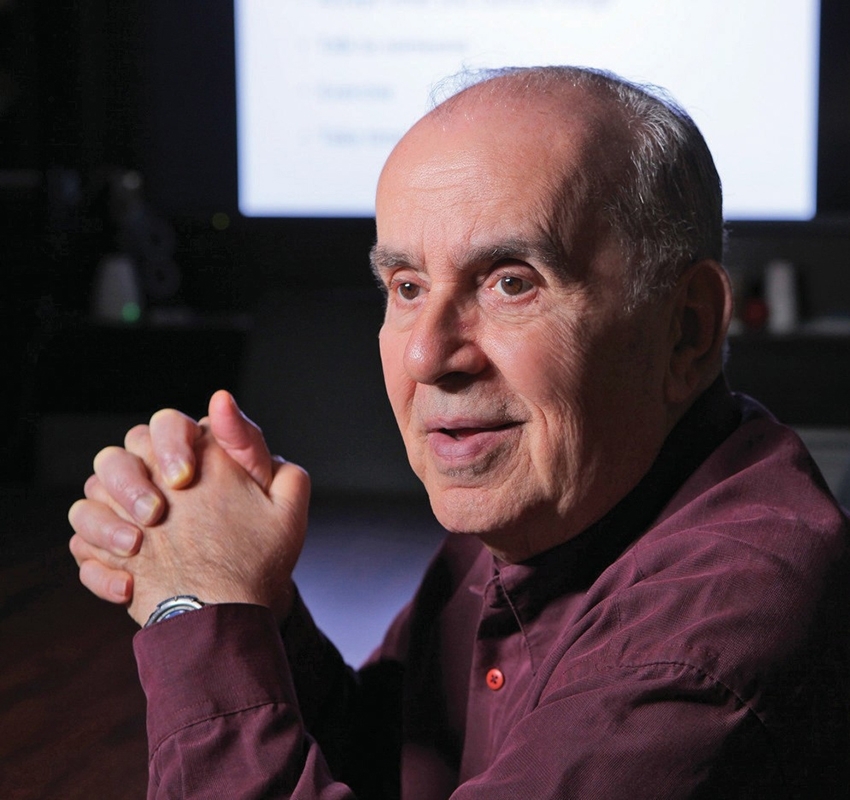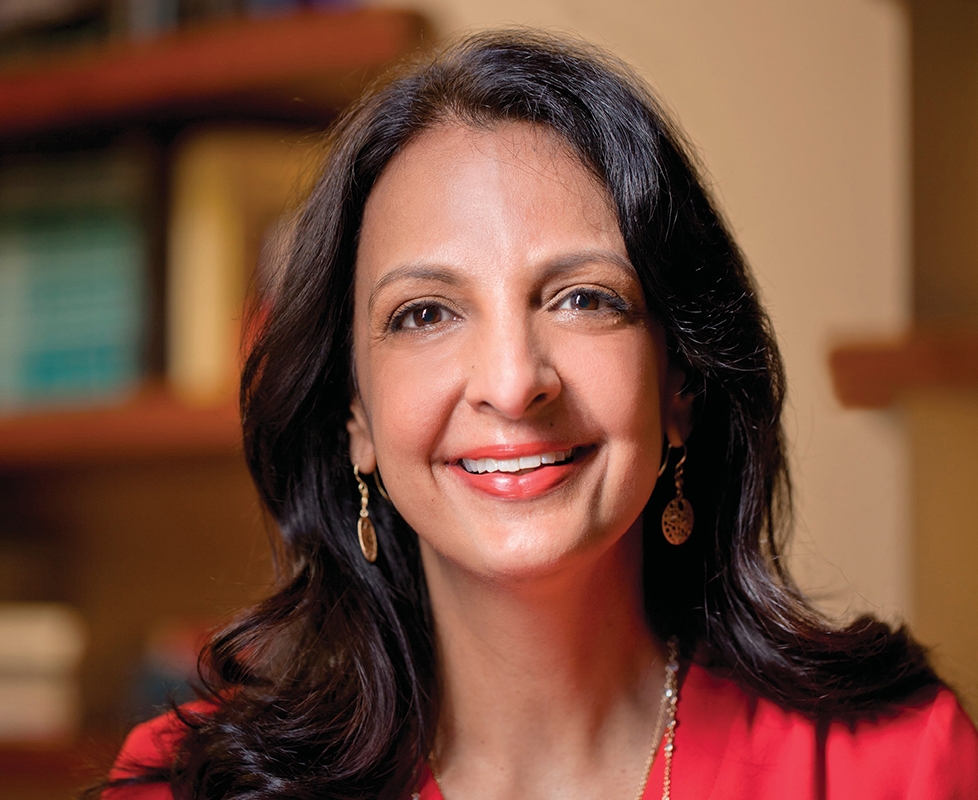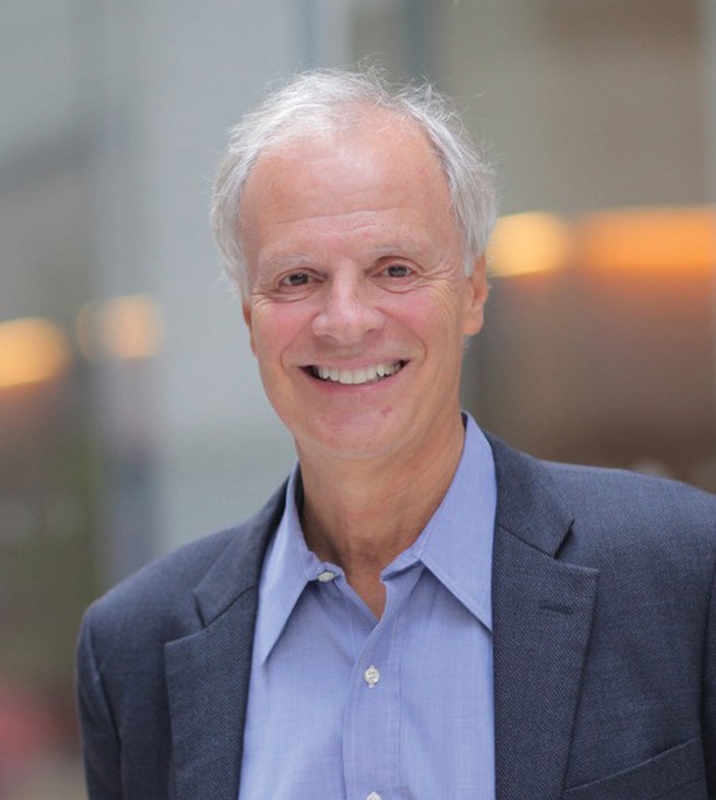By studying the use of electronic health records, Weill Cornell Medicine investigators aim to transform how patients receive medical care
By Anne Machalinski
Photography by John Abbott
When Dennis Gawrys saw a doctor for the first time in 30 years, he received some shocking news: Not only was the former Marine pre-diabetic, but he had high blood pressure and high cholesterol. He was prescribed a statin to lower his cholesterol and another medication to control his blood pressure, but a year later was diagnosed with type-2 diabetes and hypothyroidism. His doctors added the diabetes drug metformin and a thyroid medication to his daily regimen. "I was so scared," says Gawrys, now 73, of Manhattan. But "knowing that 99 percent of your health is up to you," he took control.
He joined a Weill Cornell Medicine diabetes support group, which he still attends every Tuesday, and started exercising and adhering to a low-carb diet. While those changes offered significant improvements, it wasn't until a decade later — when he logged into an online patient portal called Weill Cornell CONNECT — that he truly felt ownership of his health. Gawrys was able to track his blood test results, cholesterol levels, and hemoglobin A1C score, which measures how well blood sugar is controlled. He could also access and download his medical records before an appointment with a specialist, manage his prescriptions and order refills and send questions to his clinicians. Three years ago, Gawrys reaped the benefits: His doctor took him off metformin, decreased other medications, and downgraded him to a twice-yearly appointment. "The online portal represents a guidepost for me," he says. "While I still have to be vigilant, knowing that the numbers will be there keeps me honest and on top of things."
Gawrys is just one patient, but improving the implementation and use of electronic records and patient portals could ultimately lead to better health outcomes for entire populations. Weill Cornell Medicine scientists are piecing together a nuanced picture of the strengths and weaknesses of these systems — among the most widely recognized aspects of modern healthcare — as part of a broad inquiry by faculty into how to make medical care more accessible, effective and affordable for patients and the people and institutions that provide it. "Problems with quality and cost in the U.S. healthcare system are well recognized," says Dr. Rainu Kaushal, chair of the Department of Healthcare Policy and Research and the Nanette Laitman Distinguished Professor of Healthcare Policy and Research. "We're doing this comprehensive and multidisciplinary research so that each patient gets the right treatment at the right time, every time." In addition to scrutinizing the presentation and use of electronic health records, Weill Cornell Medicine is trying to capitalize on the growing availability of electronic data from millions of patients to make research more patient-centered, powerful and meaningful. Investigators are analyzing data to inform individual patient decisions, such as the cost-effectiveness of treatment regimens for complex conditions, and national policy, such as the efficacy of new healthcare delivery models, like Accountable Care Organizations.

Patient Dennis Gawrys
In Gawrys's case, just having easy access to his medical information made a huge difference. But while such portals are used by hundreds of thousands of people, many patients aren't as proactive as he is. About a quarter of the public say they use an online portal — but that leaves out most patients, including many who are dealing with complex conditions and multiple providers, says Dr. Jessica Ancker, an associate professor of healthcare policy and research. Dr. Ancker studies who's using — and not using — these portals, and whether the information that's there is actually helping patients better understand their health and make more informed decisions about their care. Among those most at risk of being left out of the online portal trend are patients who are black, uninsured, elderly, less computer literate, or poor. "This raises some concerns from a public health standpoint," Dr. Ancker says. "It means that we have more work to do to improve these systems so that they're more user-friendly and accessible, even for people who don't have computers."
While the vast majority of doctors and hospitals are now using electronic systems for storing patient data, most are not able to easily share information between institutions, Dr. Ancker says. As a result, patients are left to manage their own medical data and coordinate between providers. Although it is a national priority to make it possible to transfer patient data between systems, a variety of barriers — technological, financial and privacy-related — are slowing progress.
Drs. Ancker and Kaushal believe that people will be healthier only when everyone has access to real-time electronic healthcare information, which can be easily shared between providers. But proving that these technologies will improve outcomes isn't easy, in part because they're still relatively new and their use remains variable. Yet that's exactly what Dr. Kaushal is trying to do. While she calls the ubiquitous adoption of electronic records "inevitable," she stresses that the current reliance on systems that don't seamlessly communicate with one another — including the use of paperwork, phones, and fax machines — puts patients at risk. Because doctors in large, well-funded practices and urban or suburban areas are more likely to have electronic records that are interoperable than those who are in rural areas or serve poor populations, a digital divide might develop that further widens the healthcare gap between haves and have nots, Dr. Kaushal wrote in in June. Weaker communication between providers and less reliable documentation of test results and clinical observations, which are also more common when electronic systems aren't interoperable, are also of concern.
Looking ahead, both Drs. Ancker and Kaushal say that compensating providers for adopting electronic systems, improving interfaces to make them more useful to doctors, making systems interoperable among providers, and getting patients up to speed with how to access their health information is key to improving care. When it comes to numbers, like Gawrys's hemoglobin A1C or cholesterol stats, patient portals might include a picture or illustration along with the figure instead of a simple graph. The good news is they are optimistic that improvements like these will soon come to pass. "If I had a crystal ball, my expectation is that in 10 years we will be viewing healthcare much like other industries, including banking and travel," Dr. Ancker says. "We'll expect information to be electronic — and for our providers to have it all available to us, wherever we are."
Agents of Change
Healthcare policy researchers aim to improve the system from a variety of fronts
Research Network: Big Data at Work

Dr. Rainu Kaushal
Dr. Rainu Kaushal, who has twin toddlers at home, calls it her "third baby": the New York City Clinical Data Research Network. With more than $15 million to date from the independent, nonprofit Patient-Centered Outcomes Research Institute, which was created under the Affordable Care Act, the network connects six academic medical centers and 16 other organizations in New York City, bringing together 40 million medical encounters on more than 4 million unique patients to advance patient-centered research and knowledge about specific diseases and conditions, as well as to improve health systems.
"When it comes to research, being patient-centered means not only developing studies that are important and interesting, but within those studies, allowing patients to guide the specific questions that you ask," Dr. Kaushal says. Among those the New York City group is trying to answer: how a person's neighborhood affects their glucose control and health; how factors like energy level and emotional well-being are affected by bariatric surgery; and how cystic fibrosis patients use social media to communicate.
Outside researchers, too, will be able to query the NYC-CDRN for use of this data, stored at the New York Genome Center. But to gain access, they'll need to demonstrate that the work will focus on the needs of patients at every step of the process. "The research studies that we approve must be interesting to investigators and also to patients," Dr. Kaushal says. "For this reason, among others, I believe it is going to change the landscape of research and healthcare delivery."
National Policy: Theory Meets Practice

Dr. Larry Casalino
One of the department's investigators approaches his research from a powerful perspective: that of a veteran doctor. Dr. Larry Casalino, the Livingston Farrand Professor of Public Health and Chief of the department's Division of Healthcare Policy and Economics, was a family physician in full-time private practice for twenty years. "Those years help me to understand the perspectives of community-based physicians — the problems they face and the joys of patient care they experience," he says. "This helps me to frame important questions for research."
Dr. Casalino's work focuses on how the United States can improve the way healthcare is funded and organized, issues addressed heavily in the Affordable Care Act. He has written editorials in high- impact medical journals like the New England Journal of Medicine on such topics as the Center for Medicare and Medicaid Innovation (created and funded with $10 billion by the Affordable Care Act) and Accountable Care Organizations (ACOs), which make it easier for doctors and hospitals to provide coordinated, high-quality care to Medicare patients. ACOs and creative initiatives from the Innovation Center, Dr. Casalino says, could change the lives of thousands of doctors, tens of thousands of healthcare workers, and millions of patients.
Individual Patient Decisions: Comparing Costs
"If we had a way of figuring out how to match each patient with the right medication, we'd have better outcomes," notes Dr. Bruce Schackman, the Saul P. Steinberg Distinguished Professor of Psychiatry and Public Health and a professor of healthcare policy and research. "But once we have this information, how do we determine if the value of that better treatment is worth the money that society spends on it? Those are the questions that I'm interested in addressing."
Most recently, Dr. Schackman's work has resulted in funding for a major project: CHERISH (Center for Health Economics of Treatment Interventions for Substance Use Disorder, HCV and HIV). The multi-institution effort, announced in August, seeks to address a stark disparity: although a 2013 tally found that an estimated 7.6 million Americans ages 12 or older needed drug abuse treatment, only 1.5 million received it. Why? The most common reason was lack of insurance coverage and an inability to afford the costs.
With $5.8 million from the National Institute on Drug Abuse, CHERISH aims to serve as a nationwide resource for health economics research on substance use by developing and disseminating evidence that informs policy on drug treatment, as well as on hepatitis C and HIV care for substance users. To that end, it will foster collaboration among researchers, administer pilot grants, and conduct training and outreach for policymakers.
Precision Medicine: Harnessing Genomic Data
Dr. Jyotishman Pathak, who came to Weill Cornell Medicine in October from the Mayo Clinic, is focused on making big changes to what's inside each patient's personal electronic health records. In addition to the typical clinical data — weight, medical history, lab test results, and the like — the chief of the Division of Health Informatics is working to incorporate individualized genomic information so that physicians can make smarter decisions about the drugs, doses, and other interventions that they prescribe. "If both you and I are diagnosed with a certain disease, say cancer, it is quite likely that our response to existing therapies will vary due to our underlying genetics," says Dr. Pathak, who has more than $8 million in National Institutes of Health support for multiple projects to study the implementation of pharmacogenomics using electronic health records. "And it shouldn't just be about asking whether a patient will respond to one treatment over another, but also understanding the appropriate dosing regimen to increase drug efficacy and minimize the risk of side effects. I firmly believe that informatics has a crucial role to play in achieving this ambitious goal of implementing precision medicine for routine clinical care."
Ideally, Dr. Pathak would like to have everyone's genetic information incorporated into their health records as soon as possible, but he knows that the technology is still too expensive for that to be a reality. There are additional challenges around managing this "real" big data, he says, including security and ethical concerns. Certain groups, though — including those at an increased risk for cancer, heart failure, and some rare diseases — might benefit the most from the incorporation of genomic data within electronic health records for personalized clinical decision-making. Further, he says, the availability of such massive amounts of data on individual patients could help investigators and computational scientists build smarter prediction models and risk profiles — which could ultimately lead to better healthcare for everyone.
This story first appeared in Weill Cornell Medicine, Vol. 15, No.1.


